Rugby League is one of three versions of rugby football, a fast-paced collision sport played by two teams. The other versions are Rugby Union and Rugby Sevens. For general information on the game and its history, see Rugby football.
Rugby League is played throughout Europe and the Pacific. The sport’s main playing nations are Australia, France, New Zealand, Papua New Guinea, and the United Kingdom. Other countries that play Rugby League include Fiji, Jamaica, Lebanon, Samoa, Tonga, and the United States. Most of the countries that play Rugby League regularly send their national teams on overseas tours. The most important international competition is the Rugby League World Cup.
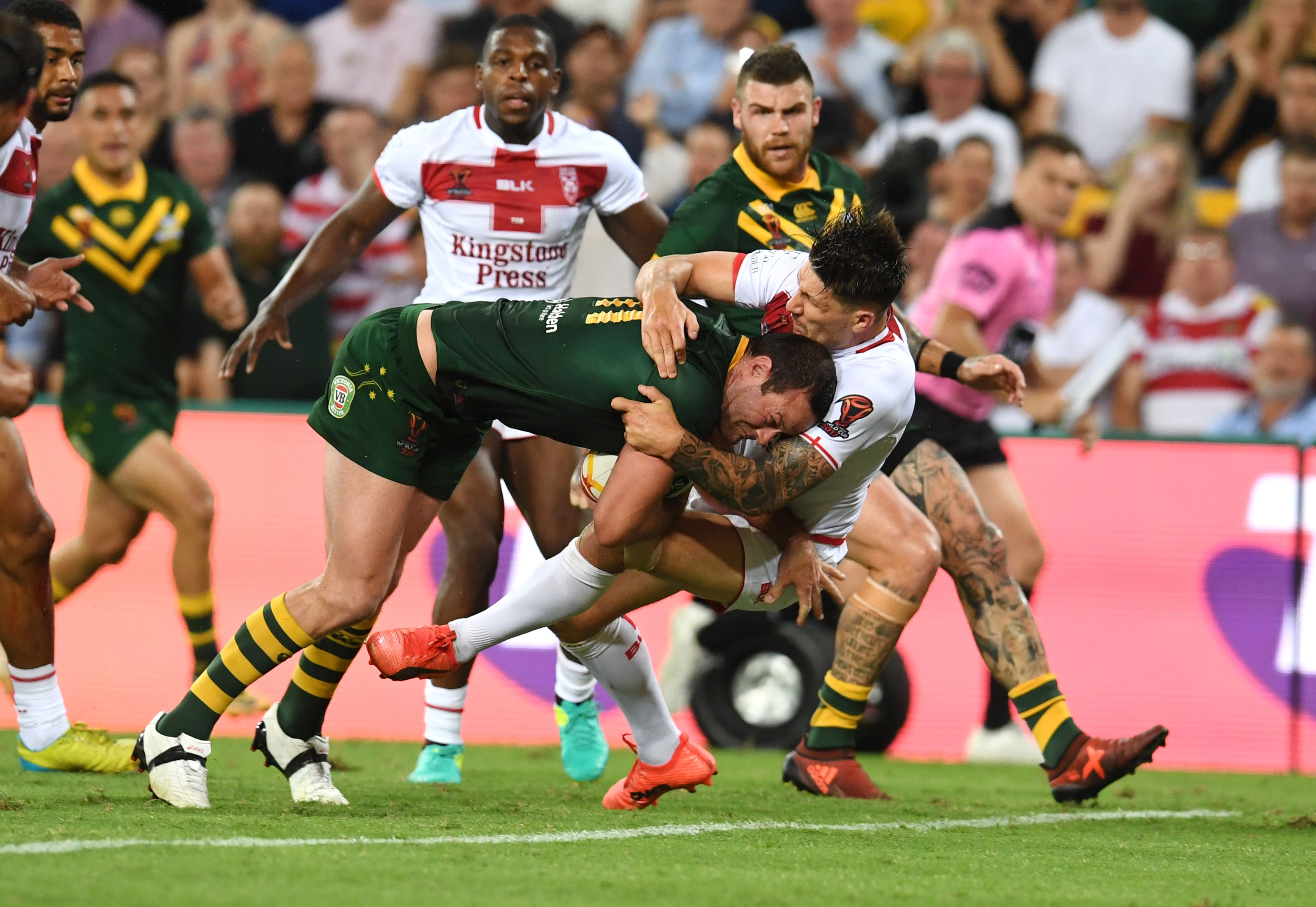
The field.
The Rugby League field is a maximum of 68 meters (74 yards) wide. The goal lines are 100 meters (109 yards) apart. An in-goal area extends from 6 to 11 meters (6 1/2 to 12 yards) beyond each goal line. The field is further divided every 10 meters (10.1 yards) by additional lines that are parallel to the goal lines. Two goal posts stand on each goal line. The posts are 5.5 meters (6 yards) apart and connected by a crossbar. 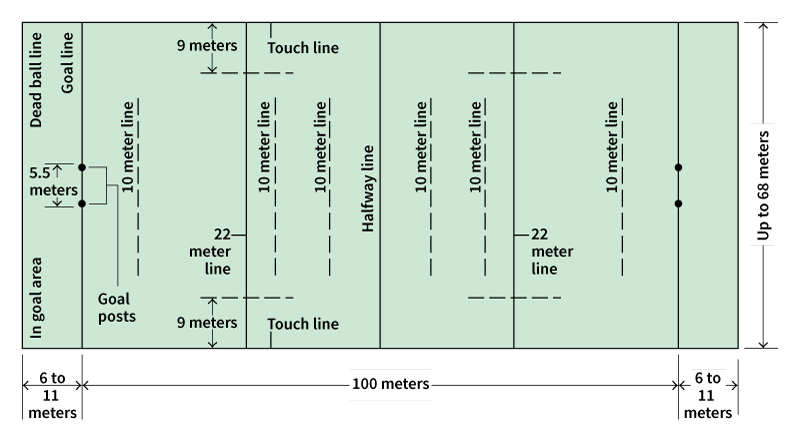
The ball
is an inflated rubber sack covered with leather or synthetic material. It is oval-shaped and averages about 28 centimeters (11 inches) long and weighs about 410 grams (14 1/2 ounces).
The officials.
A referee and two touch judges officiate the match. The referee controls the game. The referee’s judgment is final. The touch judges assist the referee in all phases of the game. Their chief function is to signal with a flag whether the ball or ball carrier crosses the sideline. They also can inform the referee of player misconduct and indicate whether points have been correctly scored. In Australia, the top matches operate with two referees as well as two touch judges. The rules of the game are technically referred to as “laws.”
The team
consists of 13 players—6 forwards and 7 backs. The forwards attempt to win possession of the ball. The backs advance the ball toward the goal by running, passing, or kicking.
Scoring
includes a try, a conversion, a penalty kick, and a field goal. A player scores a try by touching the ball to the ground in the opponent’s in-goal area. A try counts for 4 points. To score a conversion (also called a kick at goal), a player from the team that scored the try kicks the ball over the crossbar between the goal posts. The player place-kicks the ball from a point opposite the spot where the try was scored. A player makes a place kick by placing the ball upright on a plastic tee or in a small hole dug with the heel of a boot. A conversion counts for 2 points for a total of six points with the try.
A team takes a penalty kick from the spot where the other team’s violation occurred. The kick is worth 2 points. However, the team awarded the penalty kick may instead choose to gain yardage by kicking the ball into the field from outside the touch lines.
A player scores a field goal by drop-kicking the ball through the goal posts and over the crossbar at any time during the game. Drop kicking involves dropping the ball and kicking it on the first bounce. A field goal counts for 1 point.
How to play Rugby League.
Rugby League matches are divided into two 40-minute halves separated by a halftime rest period of no more than 15 minutes. A kickoff starts the match and also starts play in the second half. A player place-kicks the ball from the center spot on the halfway line. The receiving team stands 10 meters from the halfway line.
Advancing the ball.
The team with the ball tries to move it over the opponent’s goal line. Any player can run with the ball and kick it in any direction. Players may pass, throw, or knock the ball to any teammate not in front of them. Only the player carrying the ball is allowed to be tackled.
Playing the ball.
During a game, a team in possession is allowed six tackles, or downs, to score points. If the team does not score, a hand-over occurs to allow the opposing team six tackles. After each tackle is completed, the ball carrier places the ball on the ground and plays the ball back with a foot to a teammate. That player can then pick up the ball to continue play. All players from both teams must be 5 meters (5 1/2 yards) from where the ball is played. They cannot move up until the ball is played.
The scrum.
A scrum restarts play after one of the teams has committed a minor violation or a ball carrier goes over the sideline. In a scrum, the two opposing sets of forwards link themselves together tightly and lower their heads to make a tunnellike formation. A player from the team not responsible for the violation tosses the ball into the scrum. The two sets of forwards push from opposite sides as soon as the ball enters the scrum. Each side attempts to move the scrum into a position that allows its hooker to kick the ball out of the scrum to a teammate.
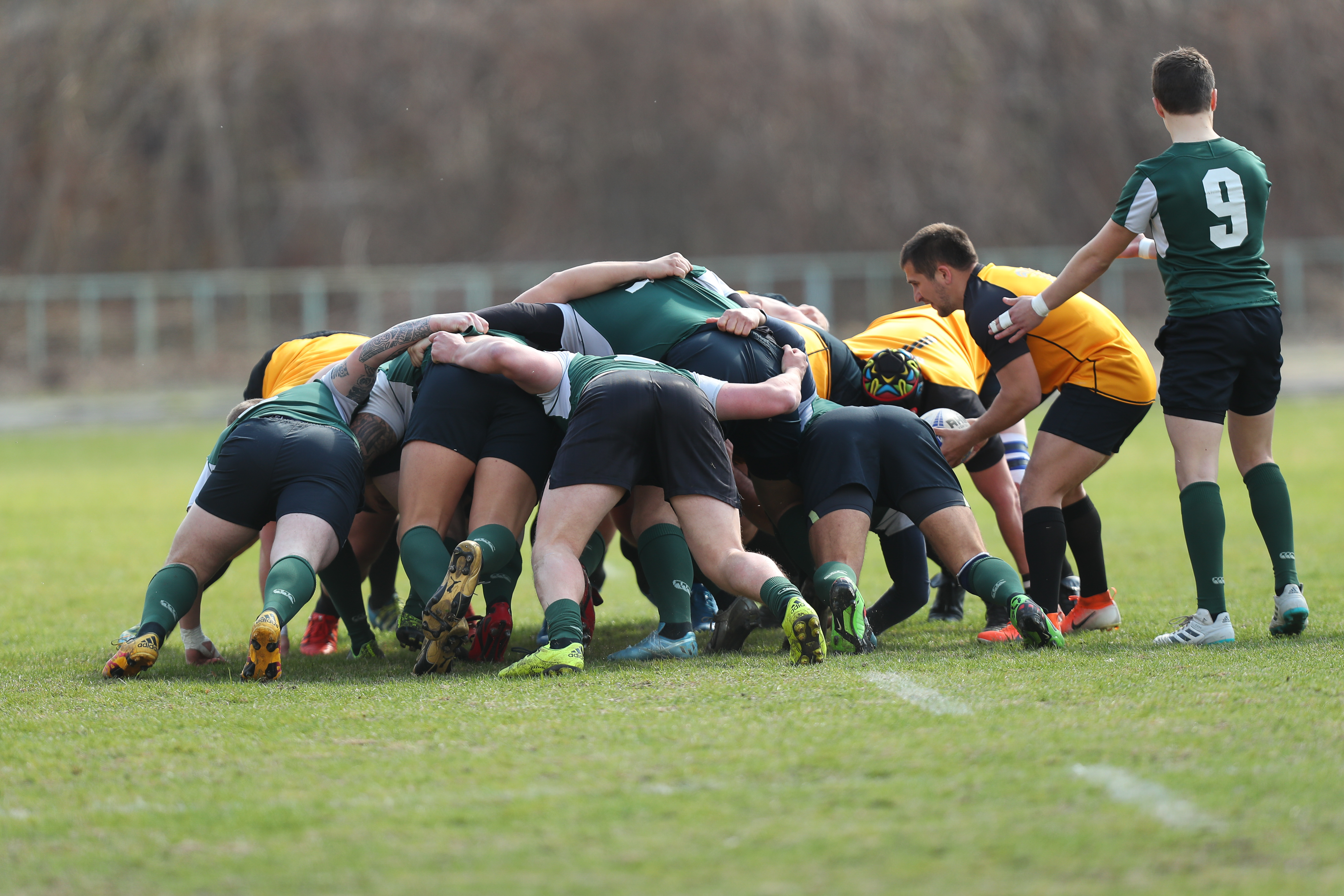
Replacements.
Each team has four replacement players who can interchange with players on the field. The number of permitted interchanges of players varies with the competition, but it generally ranges from 10 to unlimited.
Rugby Sevens.
Rugby League players can also compete in a version of the game called Rugby Sevens that features seven players on the field for each team. In Rugby Sevens, the game consists of two halves that are played for 7 minutes each. The rules for Rugby Sevens are mostly the same as those for standard 15-a-side Rugby League. However, with fewer players on each side, Rugby Sevens is a faster game. Because of the fast pace and shorter halves, sevens matches are generally played in a tournament style, with multiple matches on the same day.
Organization.
Until the 1980’s, Rugby League was played chiefly in the counties of Cumbria, Lancashire, and Yorkshire in northern England. It then expanded with the formation of teams in Wales and southern England. Most professionals in Rugby League are part-time players. Several hundred amateur Rugby League clubs play in open age, youth, and school age groups. In general, anyone 16 years of age or older can join an open-age club.
The Australian Rugby League governs the game in Australia, and the National Rugby League oversees top-level competition. The New Zealand Rugby League governs the sport in that country. The governing body in Papua New Guinea is the Papua New Guinea Rugby Football League.
Competition.
The most important Rugby League competition is the World Cup. The Rugby League World Cup began in 1954. Since 2013, it has been held every four years. Teams qualifying for the event are divided into four groups. Each team plays the other three teams in its group. The top two teams from each group progress to knockout stages in which a team plays until it loses a single match. Australia has won more Rugby League World Cups than any other country. 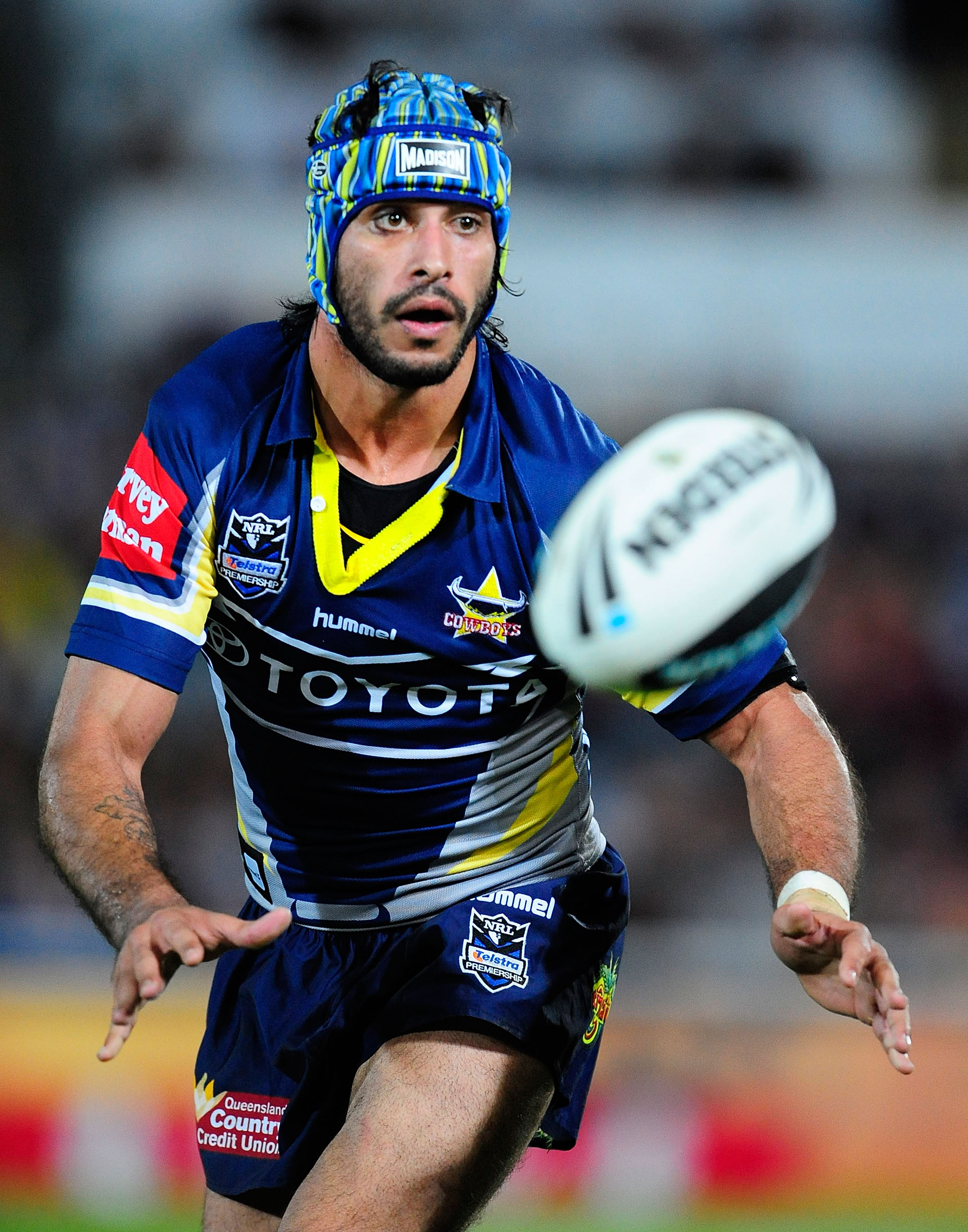
The United Kingdom plays France twice each season, at home and away. The United Kingdom also plays matches regularly against touring teams from Australia and New Zealand.
Rugby League is one of the most popular sports in Australia and New Zealand. It is played on an organized basis in all states and territories. The Australian national team is known as the Kangaroos. The New Zealand national team is called the Kiwis. The national team of Papua New Guinea is named the Kumuls, for the country’s national bird. 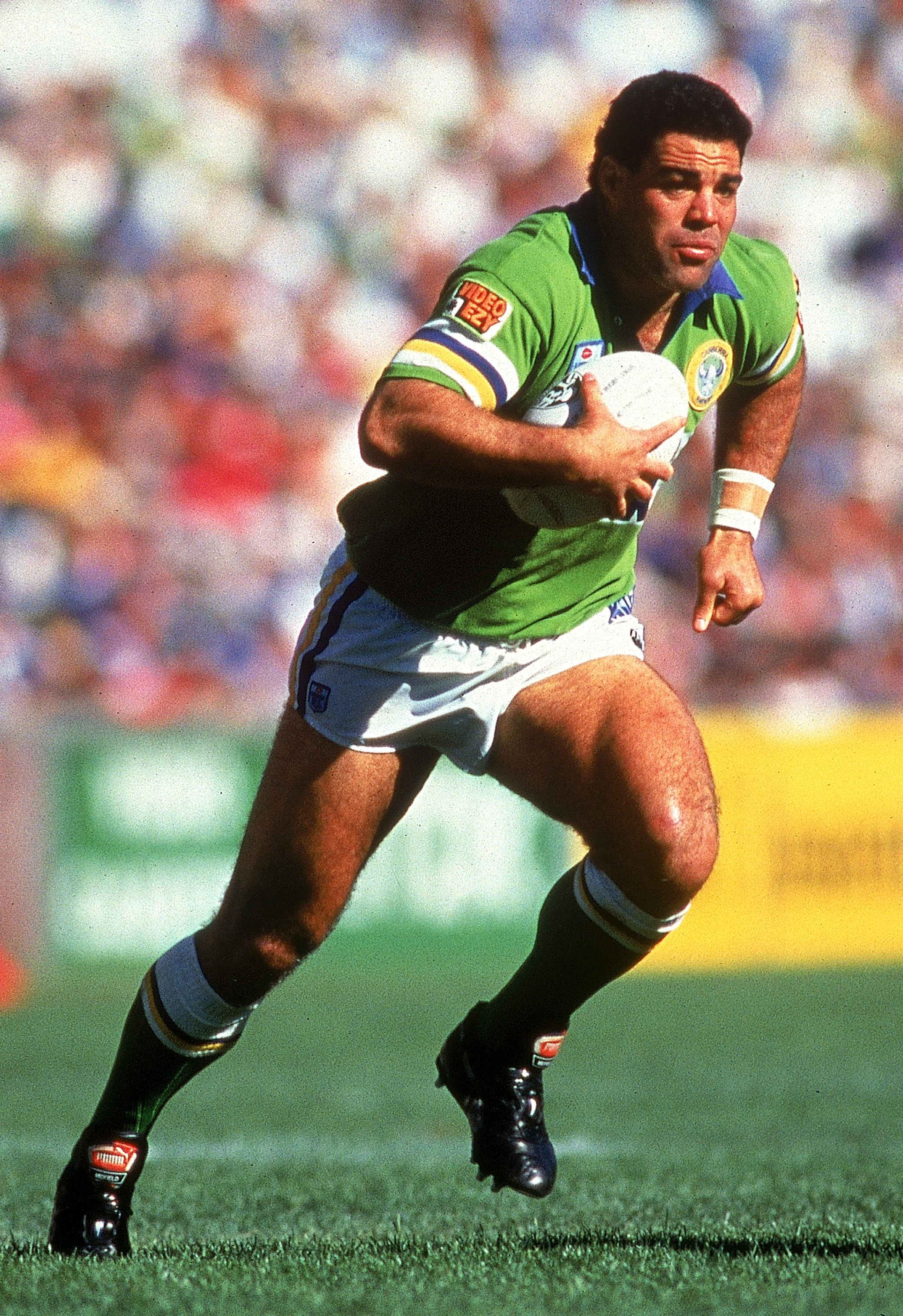
In the 1980’s, Norfolk Island, a territory of Australia, became an affiliated body of the Australian Rugby League. By the 1980’s, the popularity of the game had grown so much in Papua New Guinea that the country was included in international competition.
